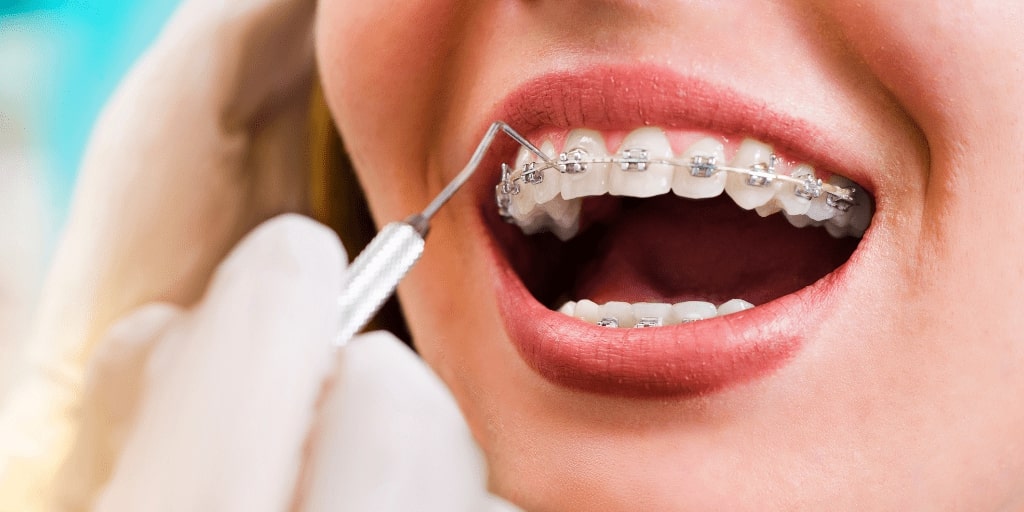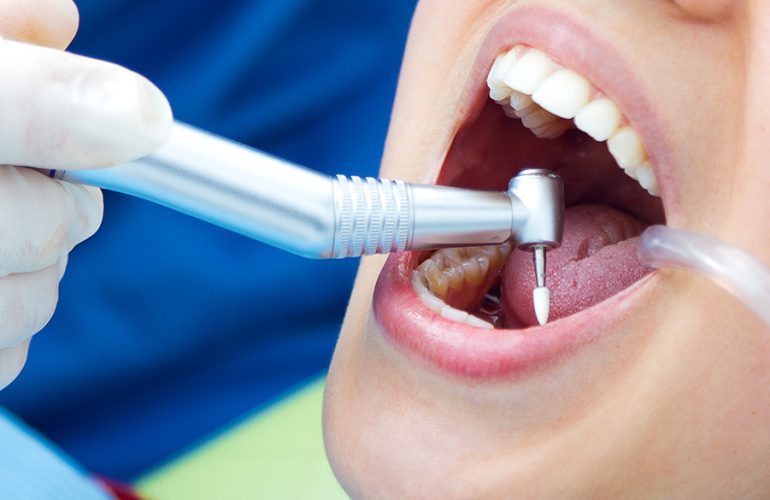What are the Benefits of Orthodontic Treatment
Orthodontic treatment can also help to improve the function of the teeth and jaws. This can lead to easier chewing and speaking, and reduced wear on the teeth.
In addition, orthodontic treatment can help to prevent or correct jaw problems such as TMJ disorders. It can also help to ensure that the teeth are properly aligned, which can reduce the risk of tooth decay and gum disease.
Types Of Orthodontic Treatment
The most common type of treatment is braces, which are used to correct misaligned teeth and jaws. Below are listed the types of Braces you can receive as your treatment and every one has its own benefit with different costing to consider.
Metal Braces:
Almost all types of teeth misalignment can be corrected with braces. This includes crowding, spacing, rotated teeth, and teeth that protrude. The process of aligning your teeth with braces usually takes about one to two years, although it can be shorter or longer depending on the severity of the issue.
There are many different types of braces available today. Metal braces are the most common type. They consist of metal brackets that are glued to your teeth, and a metal wire that runs through the brackets and is tightened over time to gradually move your teeth into place. Some people feel self-conscious about wearing metal braces, but they are usually much less noticeable than they used to be thanks to smaller brackets and thinner wires.
Ceramic Braces:
Ceramic braces are made of clear or tooth-colored brackets and wires. They are less visible than metal braces, making them a popular choice among adults. Ceramic braces are attached to the front of your teeth with a special type of glue.
While ceramic braces are less visible than metal braces, they may be more noticeable when they stain. You can avoid staining by brushing your teeth after every meal and avoiding foods and drinks that can cause staining, such as coffee and red wine.
Ceramic braces typically cost more than metal braces, but the exact cost will depend on your individual treatment plan. If you’re considering ceramic braces, talk to your orthodontist to see if they’re right for you.
Lingual braces:
Lingual braces are braces that are placed on the back of the teeth, making them invisible when smiling. Because they are less visible than traditional braces, many people choose lingual braces for cosmetic reasons. In addition to being less visible, lingual braces are also more comfortable than traditional braces because they do not rub against the cheek or gums.
Lingual braces can be used to treat a wide variety of orthodontic problems, including crooked teeth, crowded teeth, and bite problems. They can be used in both children and adults. If you are considering lingual braces, it is important to consult with an orthodontist to see if they are right for you.
Invisalign is a type of clear orthodontic aligner that is used to straighten teeth. It is made of a clear, plastic material that is virtually invisible when worn. Invisalign aligners are custom-made for each patient and are designed to gradually move teeth into their proper positions. Treatment with Invisalign typically takes 9-15 months, depending on the severity of the tooth misalignment.
Invisalign has many advantages over traditional braces, including the fact that they are nearly invisible, more comfortable to wear, and removable for eating and brushing. In addition, treatment with Invisalign tends to be shorter than treatment with braces. However, Invisalign aligners are more expensive than traditional braces, and they may not be suitable for all types of tooth misalignment.
Headgear is an important part of orthodontic treatment. It helps to move the teeth into the correct position and can be used to treat a wide variety of dental problems. Headgear is usually worn for 12-18 hours per day, and it is important to follow the instructions of your orthodontist when wearing headgear. If you do not wear headgear as prescribed, you may not get the desired results from your orthodontic treatment.
While dental braces are the most common orthodontic treatment, there is another popular option: retainers. Retainers are custom-made mouthpieces that fit snugly over the teeth. They are usually made of metal or clear plastic, and they work by gradually moving the teeth into the desired position.
Retainers are typically worn for a few hours each day, and then removed for eating and brushing. They can be a bit uncomfortable at first, but most people adjust within a few days.
There are many benefits to using retainers as an orthodontic treatment. They are less visible than braces, so they are a good option for adults who want to straighten their teeth without drawing too much attention to their smile. Additionally, retainers can be removed for special occasions (like weddings or job interviews), which is not possible with braces.
At times, removal of a tooth may be required. It helps improve and correct the subsequent teeth positioning.




